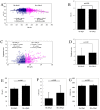Chronic mountain sickness in Chinese Han males who migrated to the Qinghai-Tibetan plateau: application and evaluation of diagnostic criteria for chronic mountain sickness
- PMID: 25007716
- PMCID: PMC4227059
- DOI: 10.1186/1471-2458-14-701
Chronic mountain sickness in Chinese Han males who migrated to the Qinghai-Tibetan plateau: application and evaluation of diagnostic criteria for chronic mountain sickness
Abstract
Background: Chronic mountain sickness (CMS), originally characterized by excess hemoglobin (Hb), is currently diagnosed using score-based diagnostic criteria combined with excessive erythrocytosis and clinical symptoms. However, the current criteria have limited applicability. We applied these criteria to 1,029 Chinese Han males migrated to and have been stayed at the Qinghai-Tibet plateau (3,700-5,000 m) for 2-96 months to investigate the prevalence of CMS and its correlations with Hb concentration, altitude, and the length of residence.
Methods: Subjects were screened for CMS using the latest approved diagnostic criteria combined with excessive erythrocytosis and clinical symptoms. Hb concentrations were measured, and a cut-off point was determined with k-means clustering. Predisposing factors were evaluated with binary logistic analysis and curve fitting analysis.
Results: (1) The prevalence of CMS at the Qinghai-Tibetan plateau was 17.8% (183/1029 subjects, with CMS score ≥ 6, and Hb ≥ 210 g/L), which is higher than that previously reported. (2) While individuals were identified into two Hb clusters with a cut-off point of 200 g/L, in the low-Hb cluster (Hb < 200 g/L), the oxygen saturation remained stable as the Hb increased; in the high-Hb cluster (Hb ≥ 200 g/L), the oxygen saturation decreased as the Hb increased. (3) Two critical factors associated with CMS development were residence at an altitude of 4,500 m and a 60-month length of residence.
Conclusions: Our presenting scoring system is more sensitive than previous diagnostic criteria and favors early screening and treatment of patients with CMS. Our finding suggests that an adjusted Hb threshold of 200 g/L (instead of 210 g/L) is more adaptable in Han individuals at all altitudes. The weight of Hb level should score ≥ 6 points using the CMS scoring system because of the pathophysiologic role of excessive erythrocytosis in patients with CMS. In addition, our data suggest the importance of early screening of CMS via regular medical examinations within the first 60 months of residence at high altitudes, especially >4500 m.
Figures


References
-
- Monge CC, Whittembury J. Chronic mountain sickness. Johns Hopkins Med J. 1976;139(SUPPL):87–89. - PubMed
-
- Wu TY. Chronic mountain sickness on the Qinghai-Tibetan plateau. Chin Med J (Engl) 2005;118(2):161–168. - PubMed
-
- Pasha MA, Newman JH. High-altitude disorders: pulmonary hypertension: pulmonary vascular disease: the global perspective. Chest. 2010;137(6 Suppl):13S–19S. - PubMed
-
- Groepenhoff H, Overbeek MJ, Mule M, Van der Plas M, Argiento P, Villafuerte FC, Beloka S, Faoro V, Macarlupu JL, Guenard H, de Bisschop C, Martinot JB, Vanderpool R, Penaloza D, Naeije R. Exercise pathophysiology in patients with chronic mountain sickness. Chest. 2012;142(4):877–884. doi: 10.1378/chest.11-2845. - DOI - PubMed
Publication types
MeSH terms
Substances
LinkOut - more resources
Full Text Sources
Other Literature Sources

